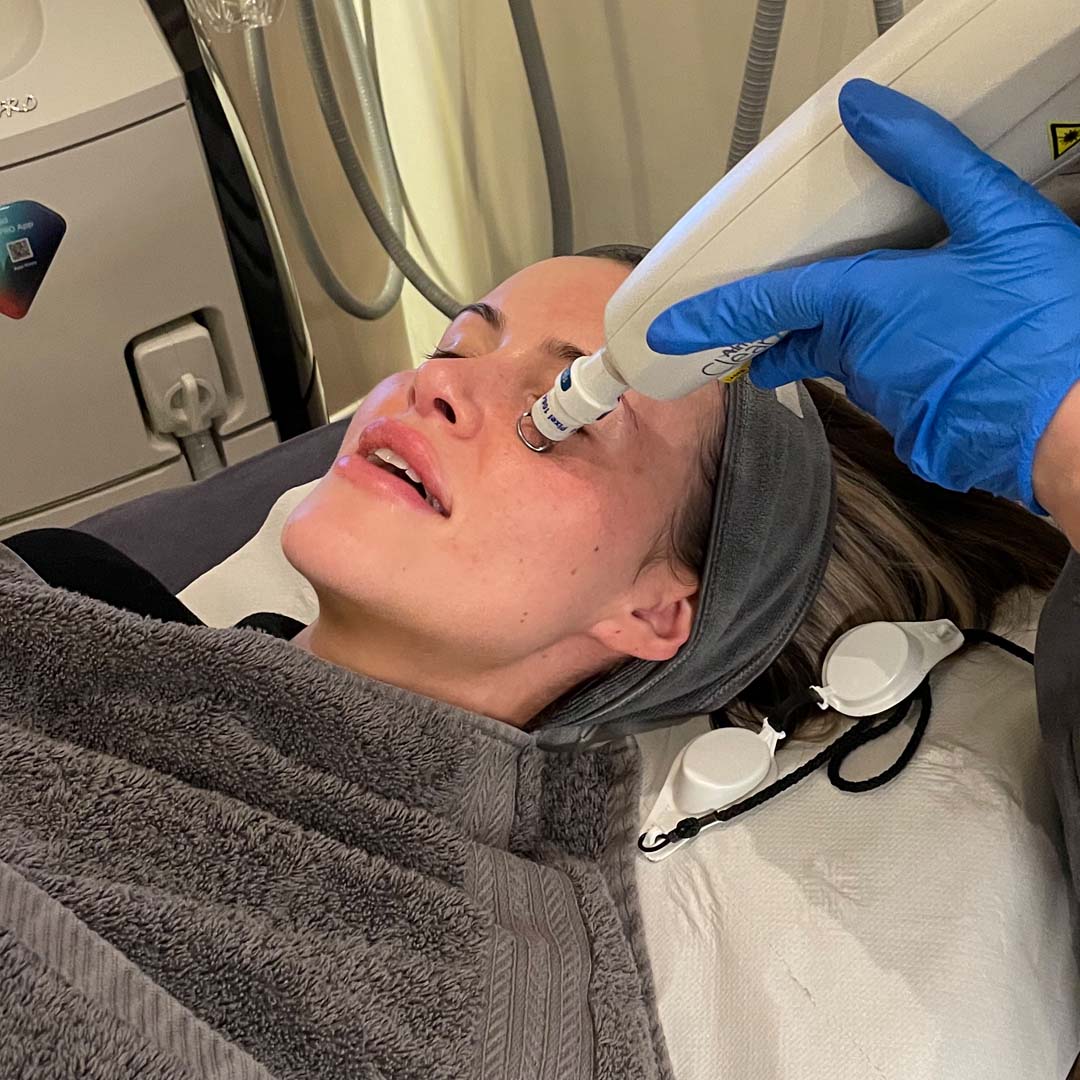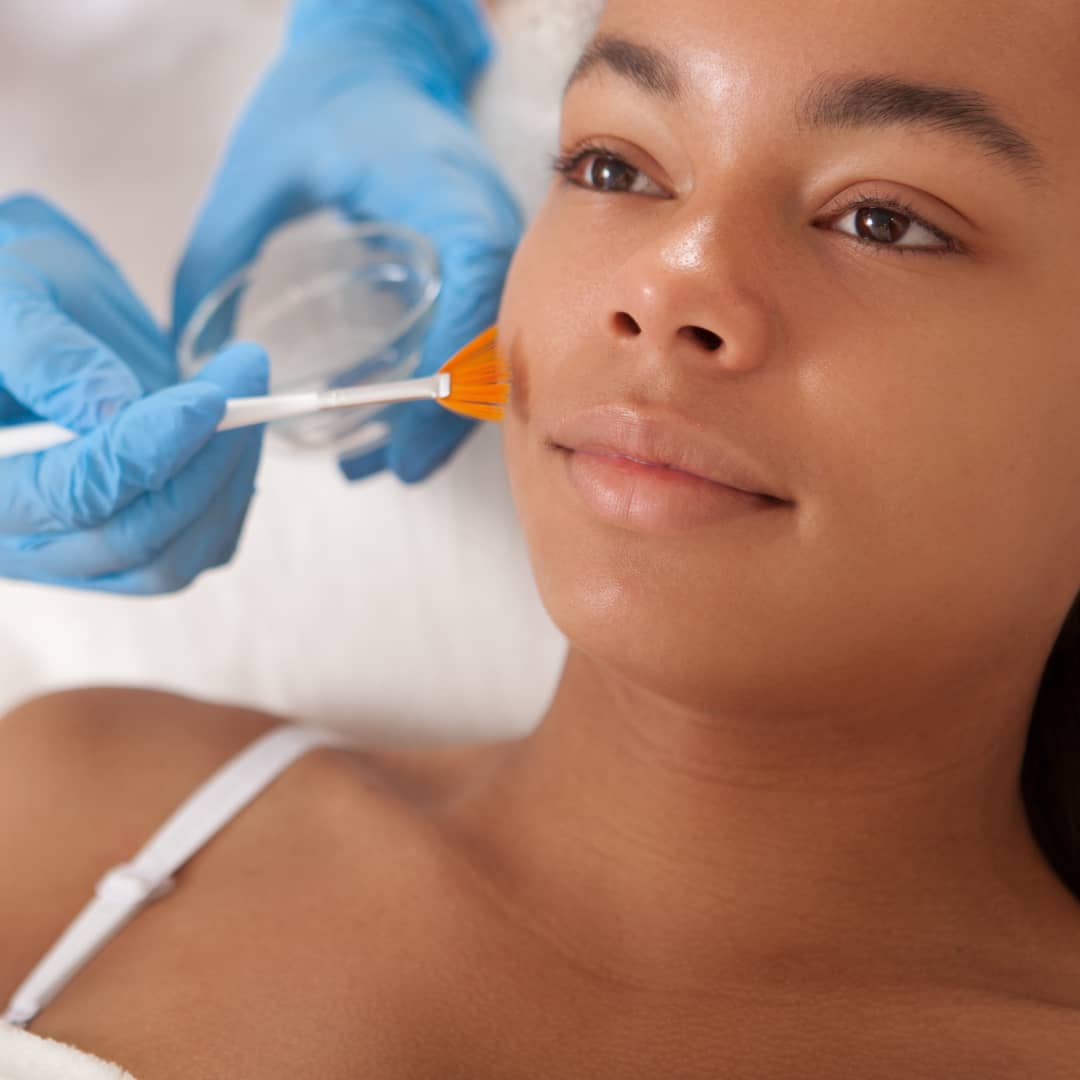

A lot of patients ask if age spots are dangerous, and while age spots are usually benign, if they start to change shape, colour, or size, or you are concerned about their appearance then should consult your Dermatologist or doctor. The changes in their appearance could be symptomatic of a more severe concern such as melanoma which is a form of skin cancer.
 ClearLift
ClearLift
The laser treatment ClearLift can resurface the skin to improve patches of irregular skin tone. The treatment delivers energy to shatter the pigment cells. However, stimulating melanocytes through laser therapy can lead to further pigmentation in darker skin types, so your practitioner may recommend alternative treatment methods.
During your consultation, one of our certified laser aestheticians will assess your suitability for treatment and discuss your treatment goals and conditions.
This treatment is painless, and the aesthetician will make a few passes over the treatment area with a hand-held device. You may feel a slight warm zap in sensitive areas. You will require several treatment sessions to benefit from the optimal effects that ClearLift offers.
The treatment takes from around 20 minutes to an hour.
The Clearlift Treatment uses Harmony XL Pro laser and a fractional Q-Switched Nd:YAG laser with near infrared technology. The device disperses pixelated energy at a depth of 3mm into the skin to create a controlled process of damaging and healing. This triggers the skin to remodel itself without causing visible damage to the surface layers.
We recommend 4-6 treatment sessions.
 Chemical Skin Peels
Chemical Skin Peels
Skin peels use chemical compounds and acids to remove damaged layers of the skin to reveal a smoother and more even skin tone. As the skin peel dissolves the outermost layers of the skin, it also fades and lightens pigmentation.
The treatment begins with a consultation where your practitioner will assess your skin to decipher your skin conditions and the best course of treatment.
Certain peels like Cosmelan or Enerpeel may require skin preparation with the use of at-home products in the lead up to your appointment. Your practitioner will prescribe a list of recommended products that will be suitable for you or provide you with the appropriate preparation kit.
If we’re treating you with a Cosmelan peel, we’ll require you to use a prepping de-pigmentation kit before your initial treatment to prepare your skin for the peel.
During your treatment, your practitioner will double cleanse and prepare the skin by applying a barrier cream around sensitive areas and remove all sebum to aid penetration of the acids.
Following this, we will apply the peel of choice and leave it on for a few minutes before neutralising or removing the peel. A neutraliser will prevent the acid from working on the skin, whereas a removal wipe will leave the acid active on the skin to continue improving the complexion following treatment.
Chemical skin peels are suitable for anyone who is looking for overall skin rejuvenation and an improvement in skin tone and texture. Or, those who have:
The duration of the treatment will depend on your custom needs. Some peels may be left on for longer, depending on your needs and tolerance to treatment. Typically, it’ll take around 30 minutes.
Chemical skin peels vary in strength and substance and are either superficial, medium or deep depending on your skin concerns and skin type.
The acids and other active compounds react with the skin and dissolve the outermost layers of the skin to reveal a fresher, clearer and brighter complexion. Chemical skin peels also promote collagen and elastin growth that will encourage the growth of healthier skin.
With a pixelated laser penetration, this treatment absorbs melanin with a highly targeted approach to even out your overall complexion and reduce superficial age spots.
Your consultation will determine your suitability for treatment.
The nurse will apply a numbing cream to minimise discomfort during treatment. We will configure the depth depending on the area and concern, and the device will make a few passes over your skin, delivering bursts of energy.
After the iPixel treatment, you may notice square formations with tiny pinprick dots on the skin. The nurse will apply a topical serum to minimise these marks.
The fractional ablative laser treatment delivers precise beams of energy in a pixel-size formation to target specific cells. The surrounding cells remain intact, which speeds up healing. The heat from the energy destroys the injured or damaged cells and stimulates collagen production to remodel and fill in the area with new healthy cells.
Most patients require 4-8 sessions. One session every 4-6 weeks depending on the severity of the skin concern.
Numbing cream is applied for 20 minutes, followed by the treatment, which takes approximately 30 minutes.
Please note, all consultations are subject to the applicable consultation change or deposit.


In-clinic OR Virtual Consultation
Refundable £50 deposit required to secure your complimentary
consultation, redeemable against treatment
To request a consultation, please complete this form.
In-clinic OR Virtual Consultation
Refundable £50 deposit required to secure your complimentary
consultation, redeemable against treatment
